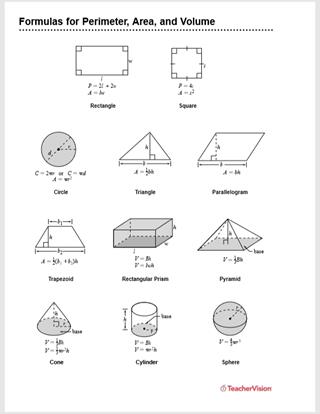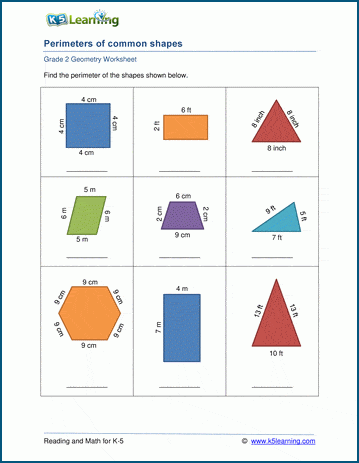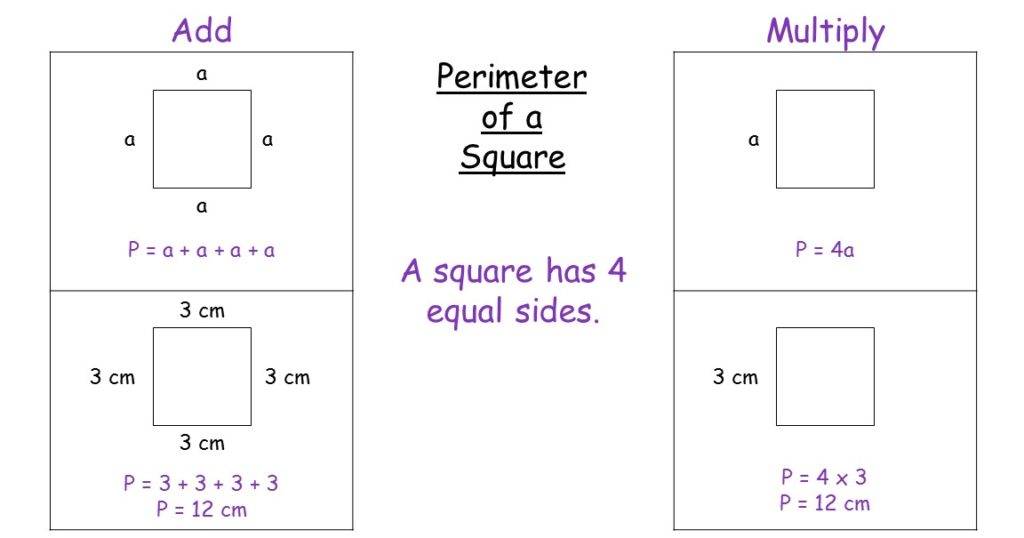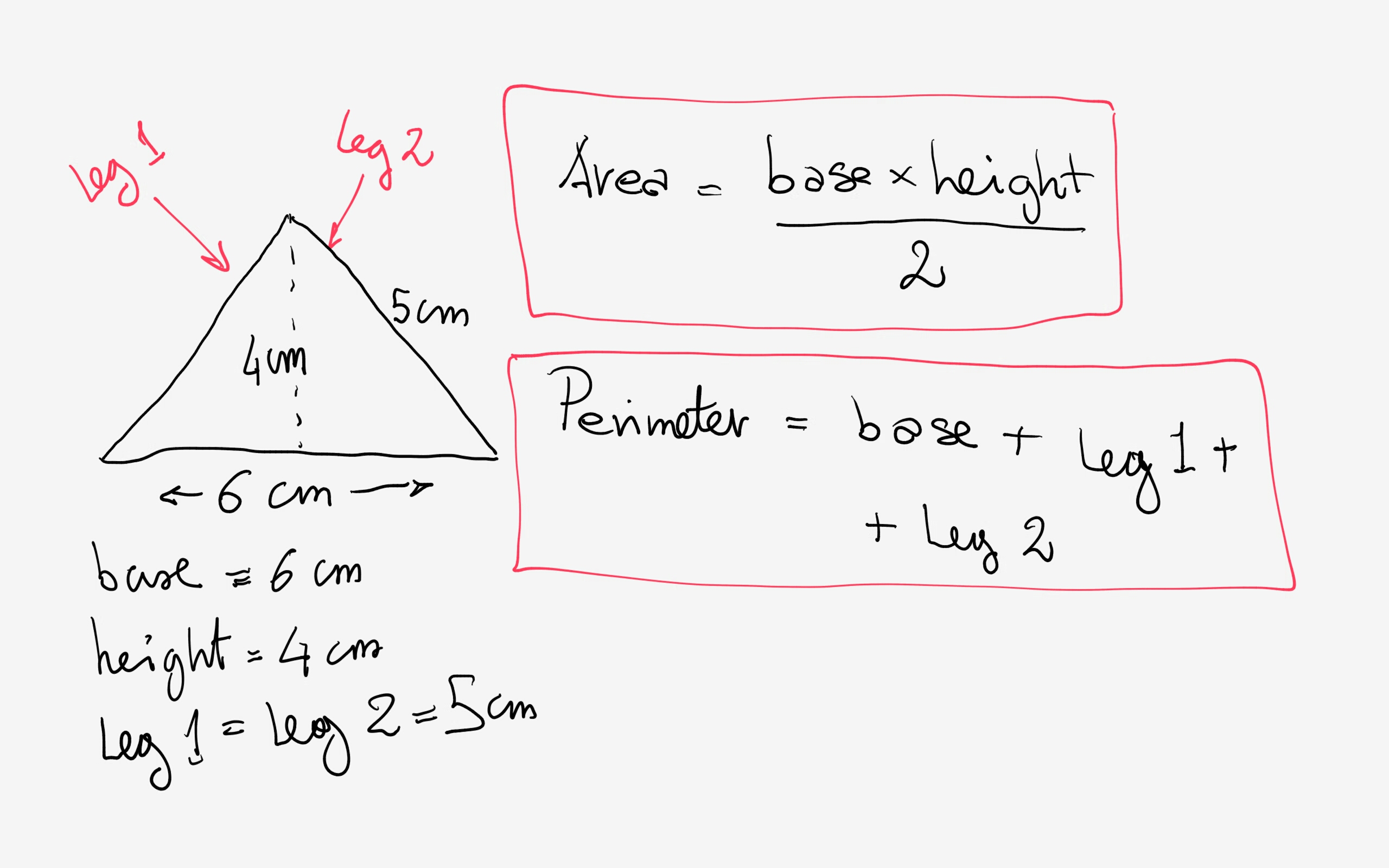Topic formula for area perimeter and volume: Discover the essential formulas for area, perimeter, and volume in this comprehensive guide. Perfect for students and educators, this article breaks down each formula for common shapes, providing clear explanations and practical examples. Master geometry concepts and boost your math skills with ease!
Table of Content
- Formulas for Area, Perimeter, and Volume
- Introduction
- Basic Geometry Concepts
- Formulas for Common Shapes
- Advanced Geometry Formulas
- Applications of Area, Perimeter, and Volume Formulas
- Examples and Practice Problems
- Visual Aids and Diagrams
- Conclusion
- YOUTUBE: Video này giải thích chi tiết về các công thức chu vi, diện tích và thể tích với hướng dẫn từ Mr. J. Hãy cùng tìm hiểu để nắm vững kiến thức này nhé!
Formulas for Area, Perimeter, and Volume
Understanding the formulas for area, perimeter, and volume is essential in geometry. Below is a detailed compilation of these formulas for various shapes.
Area Formulas
- Square: \( A = s^2 \) where \( s \) is the length of a side.
- Rectangle: \( A = l \times w \) where \( l \) is the length and \( w \) is the width.
- Triangle: \( A = \frac{1}{2} \times b \times h \) where \( b \) is the base and \( h \) is the height.
- Circle: \( A = \pi r^2 \) where \( r \) is the radius.
- Parallelogram: \( A = b \times h \) where \( b \) is the base and \( h \) is the height.
- Trapezoid: \( A = \frac{1}{2} \times (b_1 + b_2) \times h \) where \( b_1 \) and \( b_2 \) are the lengths of the parallel sides and \( h \) is the height.
Perimeter Formulas
- Square: \( P = 4s \) where \( s \) is the length of a side.
- Rectangle: \( P = 2(l + w) \) where \( l \) is the length and \( w \) is the width.
- Triangle: \( P = a + b + c \) where \( a \), \( b \), and \( c \) are the lengths of the sides.
- Circle (Circumference): \( C = 2\pi r \) where \( r \) is the radius.
- Parallelogram: \( P = 2(a + b) \) where \( a \) and \( b \) are the lengths of the adjacent sides.
- Trapezoid: \( P = a + b_1 + b_2 + c \) where \( a \), \( b_1 \), \( b_2 \), and \( c \) are the lengths of the sides.
Volume Formulas
- Cube: \( V = s^3 \) where \( s \) is the length of a side.
- Rectangular Prism: \( V = l \times w \times h \) where \( l \) is the length, \( w \) is the width, and \( h \) is the height.
- Cylinder: \( V = \pi r^2 h \) where \( r \) is the radius and \( h \) is the height.
- Sphere: \( V = \frac{4}{3} \pi r^3 \) where \( r \) is the radius.
- Cone: \( V = \frac{1}{3} \pi r^2 h \) where \( r \) is the radius and \( h \) is the height.
- Pyramid: \( V = \frac{1}{3} \times B \times h \) where \( B \) is the area of the base and \( h \) is the height.
Examples
Here are some examples to illustrate these formulas:
- Finding the area of a rectangle with length 5 cm and width 3 cm:
\( A = 5 \times 3 = 15 \, \text{cm}^2 \)
- Finding the perimeter of a square with side length 4 cm:
\( P = 4 \times 4 = 16 \, \text{cm} \)
- Finding the volume of a cylinder with radius 2 cm and height 7 cm:
\( V = \pi \times 2^2 \times 7 = 28\pi \, \text{cm}^3 \)

READ MORE:
Introduction
Understanding the formulas for area, perimeter, and volume is fundamental in geometry. These formulas are crucial for solving various mathematical problems and have practical applications in fields such as architecture, engineering, and everyday life. This guide provides a step-by-step breakdown of each formula for different shapes, helping students and educators master these essential concepts.
In this guide, we will cover:
- The basic formulas for area, perimeter, and volume
- Formulas for common geometric shapes such as squares, rectangles, triangles, and circles
- Advanced formulas for shapes like cylinders, spheres, and cones
- Practical examples to illustrate each formula
By the end of this guide, you will have a comprehensive understanding of these geometric formulas, enabling you to solve problems efficiently and accurately.
Basic Geometry Concepts
Geometry is a branch of mathematics that deals with the properties and relationships of points, lines, surfaces, and solids. To effectively understand and apply formulas for area, perimeter, and volume, it is essential to grasp some basic geometry concepts. Here, we will cover the fundamental elements of geometry, including shapes, dimensions, and measurements.
Shapes and Their Properties
- Point: A location in space with no dimensions, represented by a dot.
- Line: A straight path extending infinitely in both directions, having length but no width or height.
- Line Segment: A part of a line with two endpoints.
- Ray: A part of a line that starts at one point and extends infinitely in one direction.
- Plane: A flat, two-dimensional surface that extends infinitely in all directions.
Common Geometric Shapes
- Square: A four-sided polygon with equal sides and four right angles.
- Rectangle: A four-sided polygon with opposite sides equal and four right angles.
- Triangle: A three-sided polygon, which can be classified based on its sides (equilateral, isosceles, scalene) or angles (acute, right, obtuse).
- Circle: A set of all points in a plane that are equidistant from a given point called the center.
Dimensions and Measurements
Geometry involves different dimensions, each providing a unique way to measure shapes:
- One-Dimensional (1D): Measurement of length, such as the distance between two points.
- Two-Dimensional (2D): Measurement of area, representing the space within a shape. Examples include squares, rectangles, and circles.
- Three-Dimensional (3D): Measurement of volume, representing the space a shape occupies. Examples include cubes, cylinders, and spheres.
Measurement Units
Units of measurement are used to quantify dimensions:
- Length: Measured in units such as centimeters (cm), meters (m), and inches (in).
- Area: Measured in square units such as square centimeters (cm²), square meters (m²), and square inches (in²).
- Volume: Measured in cubic units such as cubic centimeters (cm³), cubic meters (m³), and cubic inches (in³).
Understanding these basic geometry concepts will provide a solid foundation for learning and applying the formulas for area, perimeter, and volume discussed in this guide.
Formulas for Common Shapes
Common geometric shapes have specific formulas for calculating their area, perimeter, and volume. Let's explore the formulas for some of these shapes:
| Shape | Area Formula | Perimeter Formula | Volume Formula (if applicable) |
|---|---|---|---|
| Rectangle | \( A = l \times w \) | \( P = 2 \times (l + w) \) | N/A |
| Square | \( A = s^2 \) | \( P = 4s \) | N/A |
| Triangle | \( A = \frac{1}{2} \times b \times h \) | \( P = a + b + c \) | N/A |
| Circle | \( A = \pi \times r^2 \) | \( P = 2 \times \pi \times r \) | N/A |
| Parallelogram | \( A = b \times h \) | \( P = 2 \times (a + b) \) | N/A |
| Trapezoid | Varies | \( P = a + b + c + d \) | N/A |
| Cube | N/A | \( P = 12s \) | \( V = s^3 \) |
| Rectangular Prism | N/A | \( P = 4(l + w + h) \) | \( V = l \times w \times h \) |
| Cylinder | N/A | \( P = 2 \pi r + 2h \) | \( V = \pi \times r^2 \times h \) |
| Sphere | N/A | \( P = 2 \pi r \) | \( V = \frac{4}{3} \pi r^3 \) |
| Cone | N/A | \( P = \pi r + s \) | \( V = \frac{1}{3} \pi r^2 h \) |
| Pyramid | Varies | Varies | \( V = \frac{1}{3} \times \text{Base Area} \times \text{Height} \) |
| Triangular Prism | Varies | Varies | \( V = A \times h \) |
Advanced Geometry Formulas
In this section, we will explore some advanced geometry formulas that extend beyond basic shapes and simple three-dimensional figures. These formulas are useful in various fields such as engineering, architecture, and advanced mathematics.
Surface Area and Volume of a Sphere
The formulas for the surface area and volume of a sphere are:
- Surface Area: \( A = 4\pi r^2 \)
- Volume: \( V = \frac{4}{3}\pi r^3 \)
Surface Area and Volume of a Cone
The formulas for the surface area and volume of a cone are:
- Surface Area: \( A = \pi r (r + \sqrt{h^2 + r^2}) \)
- Volume: \( V = \frac{1}{3}\pi r^2 h \)
Surface Area and Volume of a Cylinder
The formulas for the surface area and volume of a cylinder are:
- Surface Area: \( A = 2\pi r (r + h) \)
- Volume: \( V = \pi r^2 h \)
Surface Area and Volume of a Torus
A torus is a doughnut-shaped figure. The formulas for the surface area and volume of a torus are:
- Surface Area: \( A = 4\pi^2 Rr \)
- Volume: \( V = 2\pi^2 Rr^2 \)
Surface Area and Volume of a Ellipsoid
An ellipsoid is a three-dimensional figure, the generalization of an ellipse. The formulas for the surface area and volume of an ellipsoid are:
- Volume: \( V = \frac{4}{3}\pi abc \)
- Surface Area: \( A \approx 4\pi \left( \frac{(ab)^p + (bc)^p + (ca)^p}{3} \right)^{\frac{1}{p}} \) where \( p \approx 1.6075 \)
Surface Area and Volume of a Parallelepiped
A parallelepiped is a six-faced figure (hexahedron) where each face is a parallelogram. The formulas for the volume and surface area are:
- Volume: \( V = abc\sqrt{1 + 2\cos\alpha \cos\beta \cos\gamma - \cos^2\alpha - \cos^2\beta - \cos^2\gamma} \)
- Surface Area: \( A = 2(ab \sin\gamma + bc \sin\alpha + ca \sin\beta) \)
Surface Area and Volume of a Frustum
A frustum is a portion of a cone or pyramid that remains after its upper part has been cut off by a plane parallel to its base. The formulas for the surface area and volume of a frustum of a cone are:
- Volume: \( V = \frac{1}{3} \pi h (r_1^2 + r_2^2 + r_1r_2) \)
- Surface Area: \( A = \pi (r_1 + r_2) \sqrt{(r_1 - r_2)^2 + h^2} + \pi r_1^2 + \pi r_2^2 \)
These advanced geometry formulas are essential tools for solving complex problems in various applications. Understanding and mastering these formulas will enhance your ability to tackle challenging mathematical and engineering tasks.

Applications of Area, Perimeter, and Volume Formulas
Understanding the formulas for area, perimeter, and volume is crucial in various real-world applications. These applications span from everyday tasks to complex engineering projects. Here are some key applications:
1. Construction and Architecture
In construction and architecture, calculating the area and perimeter of spaces is essential for designing buildings, determining the amount of materials needed, and ensuring structures fit within specific land plots. Volume calculations are vital for understanding the space within buildings, designing HVAC systems, and estimating material quantities.
- Flooring: To determine the amount of flooring material required, the area of the floor must be calculated using \( \text{Area} = \text{length} \times \text{width} \).
- Painting: The area of walls and ceilings is calculated to estimate the quantity of paint needed.
- Volume of Concrete: For foundations and other structures, the volume of concrete is determined by \( \text{Volume} = \text{length} \times \text{width} \times \text{height} \).
2. Land Surveying and Agriculture
Area and perimeter calculations are fundamental in land surveying for determining property boundaries and land sizes. In agriculture, these calculations help in planning crop planting, irrigation systems, and fencing.
- Land Measurement: Surveyors calculate the area of land plots to define property boundaries accurately.
- Fencing: The perimeter of fields is calculated to determine the length of fencing material required.
3. Manufacturing and Packaging
In manufacturing, understanding the volume and surface area of objects is critical for packaging, storage, and transportation.
- Packaging Design: The surface area of packages is calculated to design appropriate packaging materials.
- Storage: Volume calculations help in optimizing warehouse storage by determining the space required for products.
4. Environmental Science
Area and volume formulas are used in environmental science to calculate land areas, water volumes, and pollution dispersion.
- Water Bodies: The area and volume of lakes and reservoirs are calculated for water resource management.
- Pollution Control: Understanding the area affected by pollution helps in planning mitigation strategies.
5. Everyday Applications
In daily life, these formulas are used for various practical tasks such as home improvement projects, cooking, and gardening.
- Gardening: Calculating the area of garden beds to plan planting layouts.
- Home Improvement: Estimating the amount of materials needed for projects like painting walls or tiling floors.
By mastering the formulas for area, perimeter, and volume, one can efficiently tackle a wide range of practical and professional challenges.
Examples and Practice Problems
Below are several examples and practice problems to help you understand and apply formulas for area, perimeter, and volume.
Example 1: Area of a Circle
Find the area of a circle with a radius of 7 cm.
Solution:
- Formula: \(A = \pi r^2\)
- Substitute \(r = 7\): \(A = \pi (7)^2 = 49\pi\)
- Approximate value: \(A \approx 153.94 \, \text{cm}^2\)
Example 2: Perimeter of a Rectangle
Find the perimeter of a rectangle with a length of 12 m and a width of 5 m.
Solution:
- Formula: \(P = 2(l + w)\)
- Substitute \(l = 12\), \(w = 5\): \(P = 2(12 + 5) = 2 \times 17 = 34 \, \text{m}\)
Example 3: Volume of a Cylinder
Find the volume of a cylinder with a radius of 3 cm and a height of 10 cm.
Solution:
- Formula: \(V = \pi r^2 h\)
- Substitute \(r = 3\), \(h = 10\): \(V = \pi (3)^2 \times 10 = 90\pi\)
- Approximate value: \(V \approx 282.74 \, \text{cm}^3\)
Practice Problems
- Find the perimeter of a square with a side length of 8 cm.
- Calculate the area of a triangle with a base of 6 cm and a height of 9 cm.
- Determine the volume of a rectangular prism with a length of 5 cm, a width of 4 cm, and a height of 3 cm.
- What is the surface area of a sphere with a radius of 5 cm?
- Find the area of a trapezoid with bases of 7 cm and 10 cm, and a height of 6 cm.
Solutions
- Perimeter of the square: \(P = 4s = 4 \times 8 = 32 \, \text{cm}\)
- Area of the triangle: \(A = \frac{1}{2}bh = \frac{1}{2} \times 6 \times 9 = 27 \, \text{cm}^2\)
- Volume of the rectangular prism: \(V = lwh = 5 \times 4 \times 3 = 60 \, \text{cm}^3\)
- Surface area of the sphere: \(SA = 4\pi r^2 = 4\pi (5)^2 = 100\pi \approx 314.16 \, \text{cm}^2\)
- Area of the trapezoid: \(A = \frac{1}{2}h(b_1 + b_2) = \frac{1}{2} \times 6 \times (7 + 10) = \frac{1}{2} \times 6 \times 17 = 51 \, \text{cm}^2\)
Visual Aids and Diagrams
Visual aids and diagrams are essential for understanding geometric formulas for area, perimeter, and volume. They help to illustrate the concepts and make it easier to grasp the relationships between different dimensions.
Common Geometric Shapes
Here are some visual representations of common geometric shapes along with their area, perimeter, and volume formulas:
| Shape | Diagram | Formulas |
|---|---|---|
| Square |  |
|
| Rectangle |  |
|
| Triangle |  |
|
| Circle |  |
|
| Rectangular Prism |  |
|
| Cylinder |  |
|
Complex Geometric Shapes
For more complex shapes, we can break them down into simpler components. Here are some examples:
- Trapezoid
- Area: \( A = \frac{1}{2} (a + b) h \)
- Composite Shapes
- Combine the areas of individual shapes to find the total area.
- Example: An L-shaped figure can be divided into two rectangles.
Interactive Tools
Using interactive tools and software can further enhance understanding. Platforms like GeoGebra and Khan Academy offer dynamic diagrams that allow you to manipulate dimensions and observe the changes in real-time.
These visual aids and diagrams serve as a valuable resource for students and educators alike, providing a clear and concise way to understand and apply geometric formulas.
Conclusion
Understanding the formulas for area, perimeter, and volume is fundamental in both academic settings and real-world applications. These formulas allow us to calculate the space within shapes, the distance around them, and the capacity they can hold. Mastery of these concepts enables us to tackle complex geometry problems and apply mathematical reasoning to various fields such as architecture, engineering, and everyday life.
By comprehensively studying and practicing these formulas, students and professionals alike can enhance their problem-solving skills and mathematical proficiency. Whether dealing with simple shapes or more advanced geometric figures, the principles of area, perimeter, and volume serve as essential tools in a wide range of practical and theoretical contexts.
In summary, the exploration of these geometric formulas not only enriches our mathematical knowledge but also empowers us to approach diverse challenges with confidence and precision. Continuous learning and application of these principles will undoubtedly lead to greater success and innovation in numerous disciplines.

Video này giải thích chi tiết về các công thức chu vi, diện tích và thể tích với hướng dẫn từ Mr. J. Hãy cùng tìm hiểu để nắm vững kiến thức này nhé!
Chu vi, Diện tích, và Thể tích Giải thích | Toán học cùng Mr. J
READ MORE:
Video này giới thiệu những kiến thức cơ bản về chu vi và diện tích, cũng như thể tích trong hình học, được trình bày bởi Khan Academy. Hãy cùng khám phá để hiểu rõ hơn về các công thức quan trọng này!
Chu vi và diện tích: Những kiến thức cơ bản | Chu vi, diện tích và thể tích | Hình học | Khan Academy















